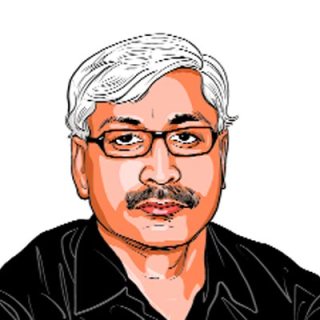Namvar Singh defined the contours of Hindu literary culture
Namvar Singh was inarguably the first and the only Hindi scholar and intellectual who commanded the respectful attention of luminaries from the world of social sciences and politics.

The most brilliant mind of our literary world is no more. The death of Hindi literary critic Namvar Singh truly marks the end of an era. What was this era? It was defined by the excitement of creation and an eagerness to sincerely engage with it. It can, therefore, be called a true age of criticism. Namvar Singh was shaped by the Gandhi-Nehru era, which has been the only period of criticism in modern India. For, criticism exists only with creation. But the task of criticism is not to validate creation or be its propagandist. Criticism is not secondary to creation. Since creation is, in itself, a response, a critical one to the existing reality, it must submit itself to criticism, which examines it by the standards it has set autonomously.
Namvar Singh epitomised this spirit of criticism. Hindi has seen great critics like Ram Chandra Shukla and Hazari Prasad Dwivedi or Ram Vilas Sharma, but Namvar Singh strode like a colossus. It is seldom that a critic remains at the centre of literary discussion for more than half a century. Namvar Singh, trained in the classical literary traditions, was equally conversant with modern literary canons. He called himself a humble disciple of Dwivedi, who in turn was influenced by the cosmic and cosmopolitan vision of Rabindranath Tagore.
Nothing is beyond criticism, was the motto of the guru and the shishya. No tradition, no canon was sacred or holy enough to not be tested by the fire of criticism. Namvar Singh had tradition in his bones and could, therefore, question its lofty claims — he knew when tradition was a source of nourishment and when it turned into a deadening disease. He was the last authoritative voice on the Aapabhransha literature in Hindi and knew his Sanskrit so well that the Sanskrit scholars never tried to dispute his judgement. Namvar Singh held that tradition can never be seen as singular, it had to be plural. His book, which is also a tribute to his guru, is titled Doosri Parampara Ki Khoj. There was no one single high tradition to which all “little” traditions must submit. He loved new voices. Young writers remember with gratitude and fondness the phone calls and postcards from Namvar Singh. He preferred to err on the side of New. Only Ashok Vajpeyi comes close to him in this respect.
The range of Namvar Singh’s scholarship was mind-boggling. He was inarguably the first and the only Hindi scholar and intellectual who commanded the respectful attention of luminaries from the world of social sciences and politics. He remained a voracious reader till the last and, like Bipan Chandra, fought his weakening eyesight to keep reading. It can be said that reading ate into his writing time. He remained a reluctant writer. People often treated this as laziness, but those who knew him well understood that it was his humility, the result of his companionship with the greats of the world of letters, that made him a reluctant writer.
Namvar Singh is described as a Marxist critic. But the adjective is redundant when applied to his work. Criticism is not a colony of social sciences. In fact, its autonomy from ideological labels makes it a worthwhile activity. He also did not fall into the trap of theory, which became a fashion in the West and marginalised the discipline of criticism for a long time. For Namvar Singh, practical criticism was essential to keep the act of criticism relevant, not only to literature but to life itself. He was the first Marxist to challenge the official Marxian aesthetic canons and introduce revisionists or unofficial Marxists such as Walter Benjamin, Theodore Adorno and Antonio Gramsci to the Hindi reading public.
Namvar Singh developed a unique writing style. He wore his scholarship lightly and his writing was accessible even to those uninitiated into literary discourses. He was also popular as a orator, who commanded large followings in big and small towns. People from all walks of life thronged to listen to him. Not surprisingly, some called this frugal writer a representative of vachik tradition.






































No hay comentarios:
Publicar un comentario